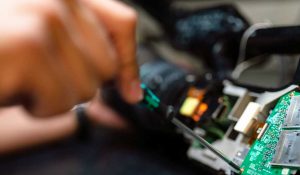Menu
Generally, yes. However, you can only register your overseas patent in Australia within 12 months of filing your patent application abroad.
There is currently no such thing as a ‘world-wide patent’. Intellectual property rights are registered separately in each country. Patents are only enforceable within the territory they were granted. For example, a US patent will only provide protection for your invention within the USA. Hence, if you want your foreign patent to be enforceable in Australia, you must register here as well.
How to protect your overseas patent in Australia
If you have filed a patent overseas and want to protect it internationally, you must also file in each country where you want protection.
An invention must be ‘new’ to be patentable. This means it is important to register in every country where you might want protection, not just your home country. If you use or patent your invention in another country it may no longer be considered ‘new’ in Australia. This would make it no longer patentable here.
If you have already filed a patent application overseas, you generally have 12 months to file in Australia. This is because the Paris Convention preserves your priority right for all member States (currently 177 countries worldwide) for 12 months from your first patent application. The priority right is a ‘grace period’ enabling you to apply for a patent in other countries where you want protection. Applying for separate patents in this way can be cost-effective if you only want protection in a few countries.
For example: You only want protection in the USA and Australia. If you have filed a patent application in the USA, you have 12 months to file your application in Australia.
However, if you want to apply for a patent in several countries, or are unsure whether you might want to patent in more countries at a later date, an international application may be appropriate.
The Patent Cooperation Treaty
If you have not already filed an application you may file an international application. You may also file this type of application within the 12 months provided by the Paris Convention. Also known as a Patent Cooperation Treaty (PCT) application, this type of application allows you to apply in all member States at once.
It is important to note that a PCT application is not an application for an international patent (these don’t exist, remember?). Rather, the application secures your priority date, which signals that you were the first to file a patent application for your invention. It also allows you up to 30 months (in most countries) to decide where you want patent protection.
This is useful because although you may only want protection in a few countries now, a PCT application gives you 2.5 years to consider whether you want to patent in others.
For example: You manufacture your invention in China and initially want to sell it in the USA and Australia. After one year, your product is well established in these countries, and you want to sell in Canada and New Zealand too. Since you filed a PCT application, your priority date was secured in these countries and you can file a national patent to protect your invention there too.
The PCT application process consists of two main phases; the international phase and the national phase.
The international phase involves filing the initial PCT application, which secures your priority date in all PCT member States. The national phase is where you file a patent in each of the countries you select, which if successful, confers patent protection in that territory.
How to file a PCT application
International Phase: Filing the PCT application, international examination, and publication
If you would like to file a PCT application, you must file your application with a receiving office. IP Australia is the receiving office if you are applying in Australia.
Remember, if you have already applied for an overseas patent, you have 12 months from the date you filed that application to file a PCT application. You have 30 months from the date of filing the PCT application to file in any countries where you want protection.
Once filed, your application is subject to an International Search. The International Search Authority will determine whether your invention is similar to any filed before your priority date. The findings of the search are reported in an International Search Report and Written Opinion. After approval, within 18 months of the priority date, the International Bureau publishes your application internationally.
National Phase: Selecting countries and filing your national application
The final step is to select the countries in which you are seeking patent protection. This is where you will nominate the individual countries where you require your patent protection to be enforceable.
In most countries, you have up to 30 months to decide whether to file a national application. In Australia, you have 31 months. However, if you do not file a national application within that time limit, you may lose your priority date.
At this point, if you want to file an application in Australia, you should follow the standard application process for Australia.
In this way, a PCT application allows you to secure a priority right quickly across many countries simultaneously. This gives you the longest possible time to decide where you want patent protection. This is useful because it can be extremely costly to patent your invention in many countries. This is particularly true if you are unsure whether you want to have a commercial presence in those countries.
To Sum Up
If it has been less than 12 months since filing your overseas patent application, you can still file in Australia. If you only want protection in a few countries, it may be cheaper and quicker to file separate applications.
However, a PCT application is an efficient way to secure your priority date across many countries all at once. If you are unsure where you may want patent protection in future, a PCT application may be right for you.
If you would like to speak with our intellectual property lawyers, then get in touch with us via the contact form or by calling 1300 337 997.







